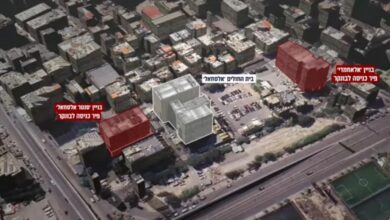Russia Claims To Have Intercepted Two American Agm-88 Harm Radar Hunter Killer Cruise Missiles

- Among the known cases, one HARM missile hit a residential building but did not detonate, while another did not explode.
- The Russians appear to have devised countermeasures, maybe through the use of electronic warfare devices, radar reflectors, and so on.
According to the Russian Defense Ministry, on September 11, Russian air defence systems successfully destroyed two American AGM-88 HARM cruise missiles.
Russian air defence systems intercepted the missiles in the Kharkiv region, about 5 kilometres from the border with the Belgorod region and around 35 kilometres from Belgorod. It was a critical incident because it was the first time American missiles were used close the Russian border.
The missiles can be carried by Ukrainian Air Force fighter planes MiG-29 and Su-27. Russia believes Ukraine has at least five aircraft carrying US-made missiles.
Ironically, the hunter becomes hunted
The AGM-88 HARM, or high-velocity anti-radiation missile, is a supersonic air-to-surface tactical missile designed to find and destroy enemy radar-equipped air defence systems. The AGM-88 can be operated with minimal pilot input.
The proportional guidance system’s antenna and seeker head, which concentrates on enemy radar signals, is located in the missile nose. A smokeless, solid-propellant, dual-thrust rocket engine powers the AGM-88 HARM missile. The missile has a range of around 150 kilometres.
HARM estimates the location of the target and can hit it even if the radar is switched off. The most recent changes are intended to target radars with variable operating frequencies.
It’s not the first time Russia has gone after American-made hunters.
On September 5, Russian air defences intercepted four HARM missiles and thirty-four HIMARS, Uragan, and Olkha rockets.
According to Lieutenant General Igor Konashenkov, four anti-radiation HARM missiles manufactured in the United States were shot down in the Kherson Region between Chernobayevka and Novaya Kakhovka. On the same day, Russian air defences shot down five drones, including a Bayraktar TB2, in the Kharkiv/Kharkov Region and the Donetsk People’s Republic.
A day of Russian Radar carnage or a myth
Between August 5 and 7, the Ukrainian Armed Forces General Staff announced the destruction of fourteen Russian air defence systems and radar stations. Because Ukraine lacked the necessary number of aeroplanes, it is suspected that the HARM was launched using modified ground launchers.
The Ukrainian claim is plausible because anti-radar missiles were never used before, and Russian radars operated with little interference. According to logic, the entire effect of the surprise attack qualifies as carnage. I’m hoping that one day we’ll learn more about this operation, which was anticipated to cost Russia hundreds of millions of rubles in equipment and hundreds of troops.
The HARM missile is tuned to radar radiation, adjusts to any frequency, and can be configured to attack a certain type of radar in advance or fired into the enemy’s air defence region to autonomously hunt for and destroy radars. The rocket emits no active radiation and cannot be identified by electronic intelligence; only radar can detect it.
However, intercepting the missile is challenging due to its small size and speed of 2.2 thousand kilometres per hour.That is, the attack and search for a target are both incredibly quick. If the enemy disables the radar, HARM remembers the coordinates of the radar radiation and flies to the target’s last known location. The 66 kg missile warhead carries up to 12 thousand striking elements, ensuring the destruction of the radar as well as losses to the workers and any surrounding objects.
In Ukraine, the efficacy of the AGM-88 HARM appears overblown until we have a clear picture of its effectiveness. Either Ukraine failed to execute a rapid, deadly assault on Russian radars in August, or the Russians changed tactics.
Ukrainian Air Force and AGM-88 HARM
The United States According to Colin Kahl, Undersecretary of Defense for Policy, the US customised HARM high-speed anti-radiation missiles for the Ukrainian Air Force’s MiG-29 aircraft. In August, US-made AGM-88 missiles launched attacks on Russian air defence systems in Ukraine.
HARMs are designed to improve the effectiveness of Ukrainian UAVs and HIMARS MLRS, as Russian forces are currently unable to construct a thick radar field in the operational-tactical zone due to high risk.
The HARM can theoretically be launched with the UAV and MLRS, and Russian air defence radars and anti-aircraft missile systems that are activated to counter HIMARS can be hit. A simultaneous launch of 20 to 30 HARM missiles can destroy Russian air defences covering an area of 100 to 200 square kilometres.
This does not appear to be the case. The HARM, like other US and Western technology, could be malfunctioning. Among the known cases, one HARM missile hit a residential building but did not detonate, while another did not explode.
The Russians appear to have devised countermeasures, maybe through the use of electronic warfare devices, radar reflectors, and so on. At the same time, the deployment of HARM has made unfettered airspace monitoring impossible, and it will push the Russians to increase the resources needed to defeat it.







Facebook Comments